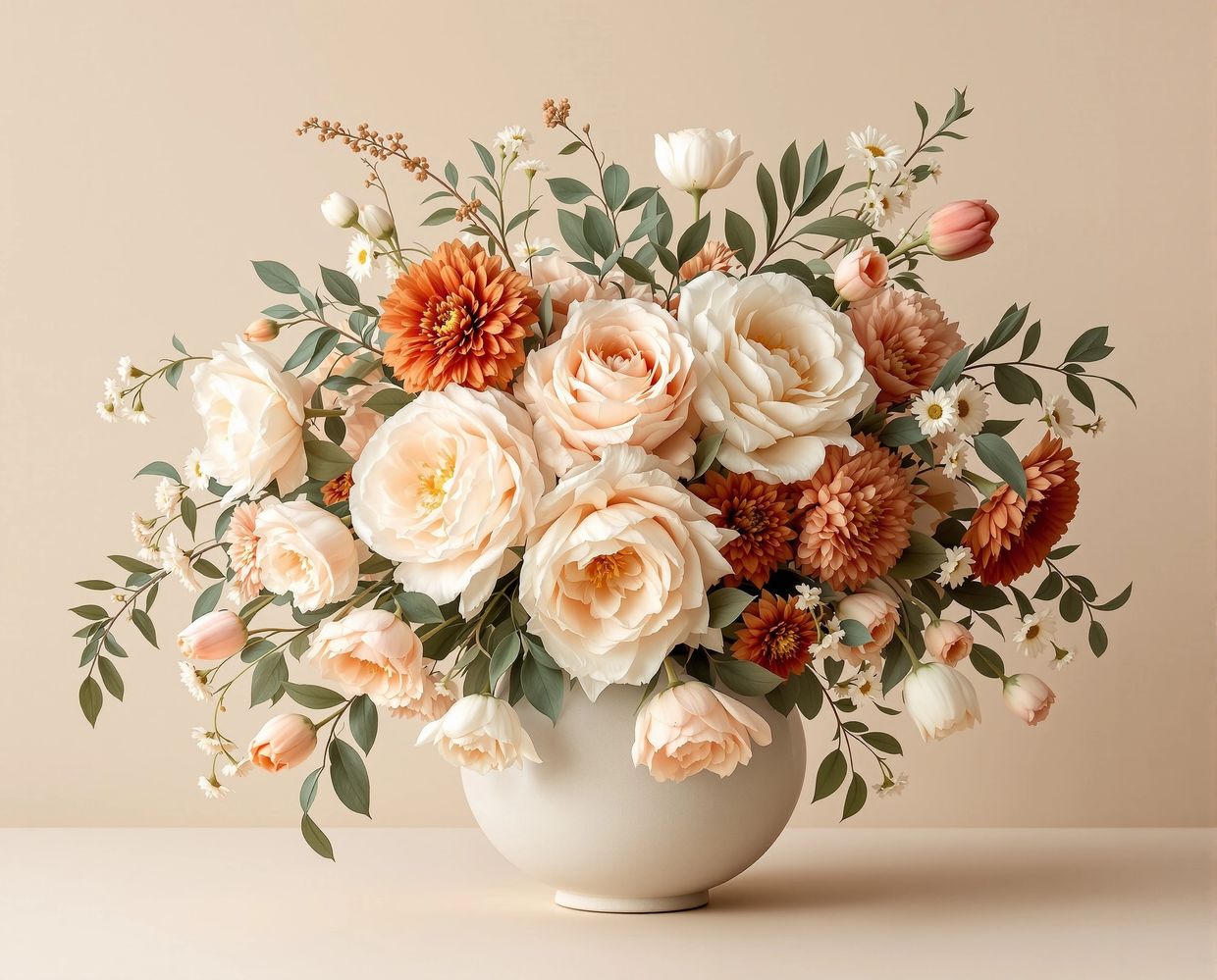
Anthos
These are not flowers. These are not paintings. These are not photographs. Anthos is an illusion — a dream given form in pixels and light. These floral compositions exist nowhere but within the latent space of artificial intelligence: a realm where probability collapses into image, and reality is conjured without ever being lived. Inspired by the 17th-century Dutch Golden Age of still-life painting, yet born entirely of digital alchemy, Anthos is a reimagining of beauty: baroque in excess, hyperreal in detail, untethered from materiality. Every petal, every curling leaf, every scattering of pollen is impossibly precise, impossibly perfect, and yet never real. The effect is seductive: at once convincing and deceptive, familiar and uncanny.
At its core, Anthos is an exploration of abundance. These bouquets are hyperreal in detail and baroque in excess, their blossoms arranged with hallucinatory clarity. Flowers never fade here, never wilt in shadow, never collapse under their own weight. Illumination falls across them as if painted with light, catching edges with delicate radiance while plunging others into velvety darkness. Some arrangements sit in heavy ceramic vases, grounded and tactile, while others hover as though suspended in air — each image shifting between photographic plausibility and painterly dream. The Pre-Raphaelite obsession with luminous detail finds its echo in this process, where every vein, petal, and fragment of colour is sharpened into vision.
AI does not see a flower, nor does it understand one. It has never felt the softness of a petal, never watched a bloom wilt in the evening sun. It does not create in the way an artist does — it predicts, drawing upon vast datasets to reconstruct an idea of a flower that has never existed before. The floral compositions of Anthos emerge from this process, conjured from probability rather than pigment or thread. Anthos exists in this in-between space: between reality and simulation, belief and illusion, beauty and impossibility. It is still life without decay, opulence without fragility, romance without time. In this way, Anthos becomes a contemporary continuation of the still-life tradition—not as a copy, but as a transformation — where flowers exist forever in bloom, abundant, precise, and eerily alive.
“Art is not a mirror to reflect reality, but a hammer with which to shape it.“ — Bertolt Brecht
Copyright © davidname 2025.
All rights reserved.